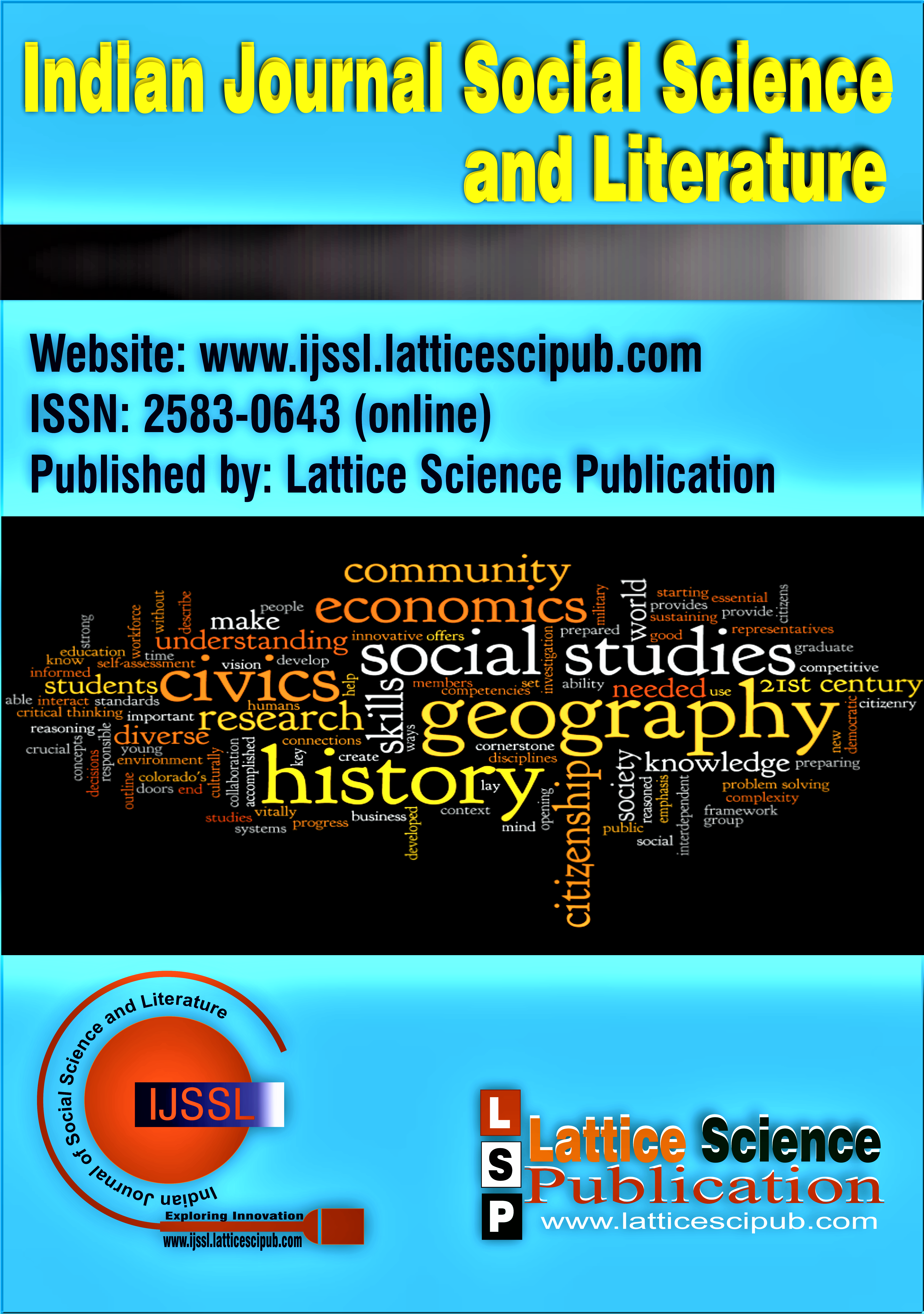Gendered Vulnerabilities in Disaster Responses: A Case Study of Majuli Island, Assam
Main Article Content
Abstract
This study employs a qualitative research methodology to study the gender disparities in disaster responses, focusing on the case study of Majuli Island in Assam, India, to provide nuanced insights into the distinct vulnerabilities experienced by women, particularly in the context of floods. Through an in-depth exploration of social norms, behavioural restrictions, and resource allocation practices, the research elucidates how women’s roles as caregivers and providers constrain their mobility and exacerbate their susceptibility to harm. The gendered ramifications of disasters on health, encompassing reproductive health issues and malnutrition, are underscored, alongside the psychological and physiological impacts that precipitate enduring mental anguish and heightened risks of violence and abuse. The findings underscore the imperative for gender-sensitive approaches to disaster preparedness, response, and recovery, advocating for comprehensive strategies that foreground women’s safety, well-being, and empowerment. By adopting a qualitative research methodology grounded in descriptive investigation, the study delves deeply into the lived experiences of communities grappling with disaster risks, offering invaluable insights for policymakers, practitioners, and communities striving to foster inclusive and resilient societies.
Downloads
Article Details

This work is licensed under a Creative Commons Attribution-NonCommercial-NoDerivatives 4.0 International License.
How to Cite
References
Agarwal, B. (1992). The gender and environment debate: Lessons from India. Feminist Studies, 18(1), 119-158. https://doi.org/10.2307/3178217
Blackie, M. J., Zimmermann, K. S., & Crane, S. B. (1994). Gender equity and women’s employment: Patterns in industrial countries. International Labour Review, 133(5-6), 611-630.
De Alwis, M. (2002). Gender and post-tsunami reconstruction: The case of Sri Lanka. Gender and Development, 10(3), 43-48.
De Mel, S. (2007). Conflict, gender, and violence: The case of Sri Lanka. The Journal of Development Studies, 43(2), 353-375.
De Mel, S., McKenzie, D., & Woodruff, C. (2010). Are women more credit constrained? Experimental evidence on gender and microenterprise returns. American Economic Journal: Applied Economics, 2(4), 1-32. https://doi.org/10.1257/app.1.3.1
Fothergill, A. (1996). Gender, risk, and disaster. International Journal of Mass Emergencies and Disasters, 14(1), 33-56. https://doi.org/10.1177/028072709601400103
Goswami, A., & Das, S. (2003). Sediment load analysis of the Brahmaputra River at Pandu, Assam. Journal of Hydrology, 20(4), 125-140.
Goswami, D. (2008). Managing the wealth and woes of the river Brahmaputra. An Introduction to Qualitative Research, 2(4).
Goswami, S. (1985). Monsoonal influence on the flow of the Brahmaputra River. International Journal of River Research, 10(2), 75-88.
IPCC. (2007). Climate change 2007: Impacts, adaptation, and vulnerability. Contribution of Working Group II to the Fourth Assessment Report of the Intergovernmental Panel on Climate Change. Cambridge: Cambridge University Press.
Mohapatra, P. K., & Singh, S. V. (2003). Indian summer monsoon rainfall: Climatology and variability. Journal of Geophysical Research: Atmospheres, 108(D6), ACL 8-1-ACL 8-14.
Motsisi, K. (1993). Gender and disaster management in Botswana. In J. R. Watson (Ed.), Natural disaster management (pp. 213-221). Oxford University Press.
Motsisi, K. (1994a). Disaster management in Lesotho: The need for women’s involvement. In P. Austin (Ed.), The role of women in disaster management (pp. 87-92). Natural Hazards Research and Information Centre.
Motsisi, K. (1994b). Women’s role in natural disasters: A case study from Lesotho. Disasters, 18(2), 152-162.
Philip, G. (2005). The silence of women: A gender perspective on the 2004 tsunami and 2005 earthquake in South Asia and Southeast Asia. International Journal of Mass Emergencies and Disasters, 23(2), 129-152.
Sahoo, B., & Parida, R. K. (2007). Role of social capital in disaster management: A case study. Disaster Prevention and Management, 16(2), 245-258.
Sen, P. K. (2010). A century of Indian summer monsoon rainfall: Impacts on society. National Academy Science Letters, 33(5-6), 151-156.
Swain, A. K. (2007). Disaster and gender: The case of the 1999 Orissa super cyclone. Indian Journal of Gender Studies, 14(2), 265-285. https://doi.org/10.1177/097152150701400204
Wiebe, H. (2006). River flooding and erosion in Northeast India: Exploratory consideration of key issues. In Northwest Hydraulic Consultants (NHC), Alberta, Canada.
Fomunyam, K. G. (2020). Women as Canons in Engineering Theorizing their Experiences and Exploits. In International Journal of Engineering and Advanced Technology (Vol. 10, Issue 1, pp. 487–496). https://doi.org/10.35940/ijeat.a1861.1010120
Elbaar, E. F. (2019). Adaptation Strategies of Woman in Fishing Community towards Environmental Change in Administrative Village Of Kereng Bangkirai, the City of Palangkaraya. In International Journal of Innovative Technology and Exploring Engineering (Vol. 8, Issue 11, pp. 865–874). https://doi.org/10.35940/ijitee.k1536.0981119
Dash, Dr. S. (2022). Women of Real and Virtual World: Exploring the Opportunities and Challenges During COVID 19. In Indian Journal of Social Science and Literature (Vol. 1, Issue 3, pp. 1–4). https://doi.org/10.54105/ijssl.c1010.031322
Thomas, T. G., & Kumar N.S., Dr. P. (2019). A Portrayal of Ecological Perspectives on Climate Change in Indian Cinema. In International Journal of Recent Technology and Engineering (IJRTE) (Vol. 8, Issue 3, pp. 4250–4255). https://doi.org/10.35940/ijrte.c5153.098319
(Mukherjee), D. B., & Pan, Dr. U. (2023). Empowerment of Rural and Urban Women in West Bengal A Case Study in Birbhum District. In International Journal of Management and Humanities (Vol. 10, Issue 4, pp. 1–5). https://doi.org/10.35940/ijmh.d1673.1210423





